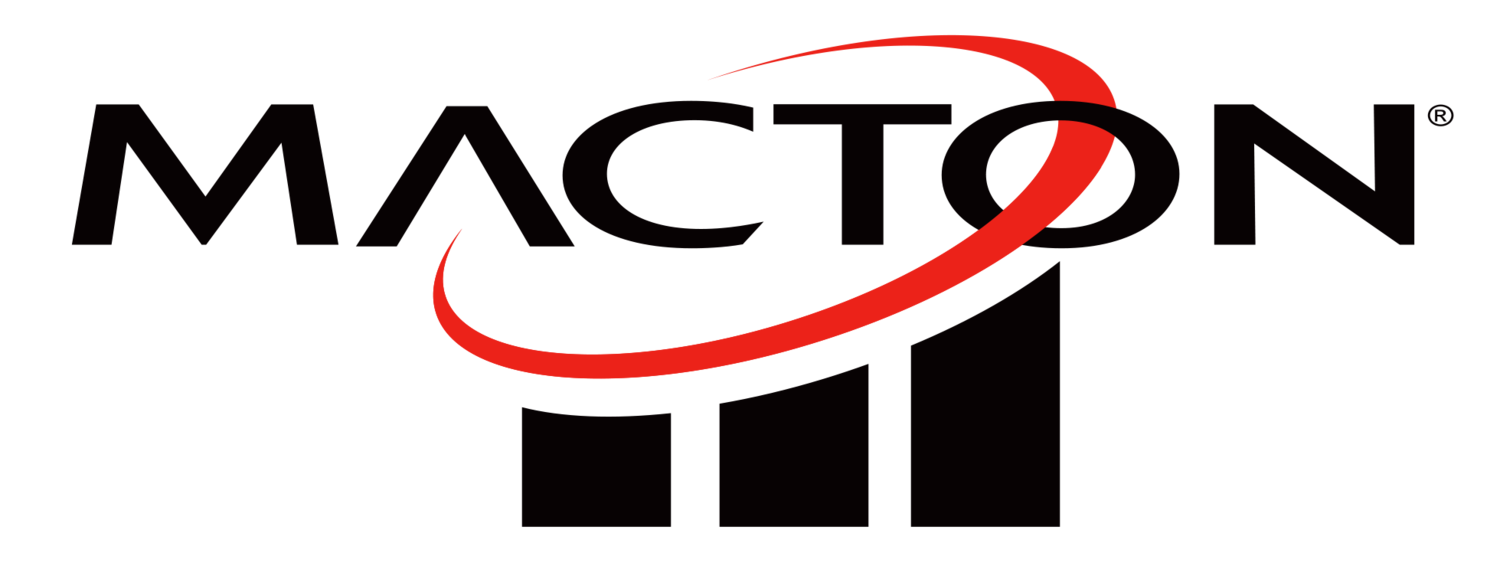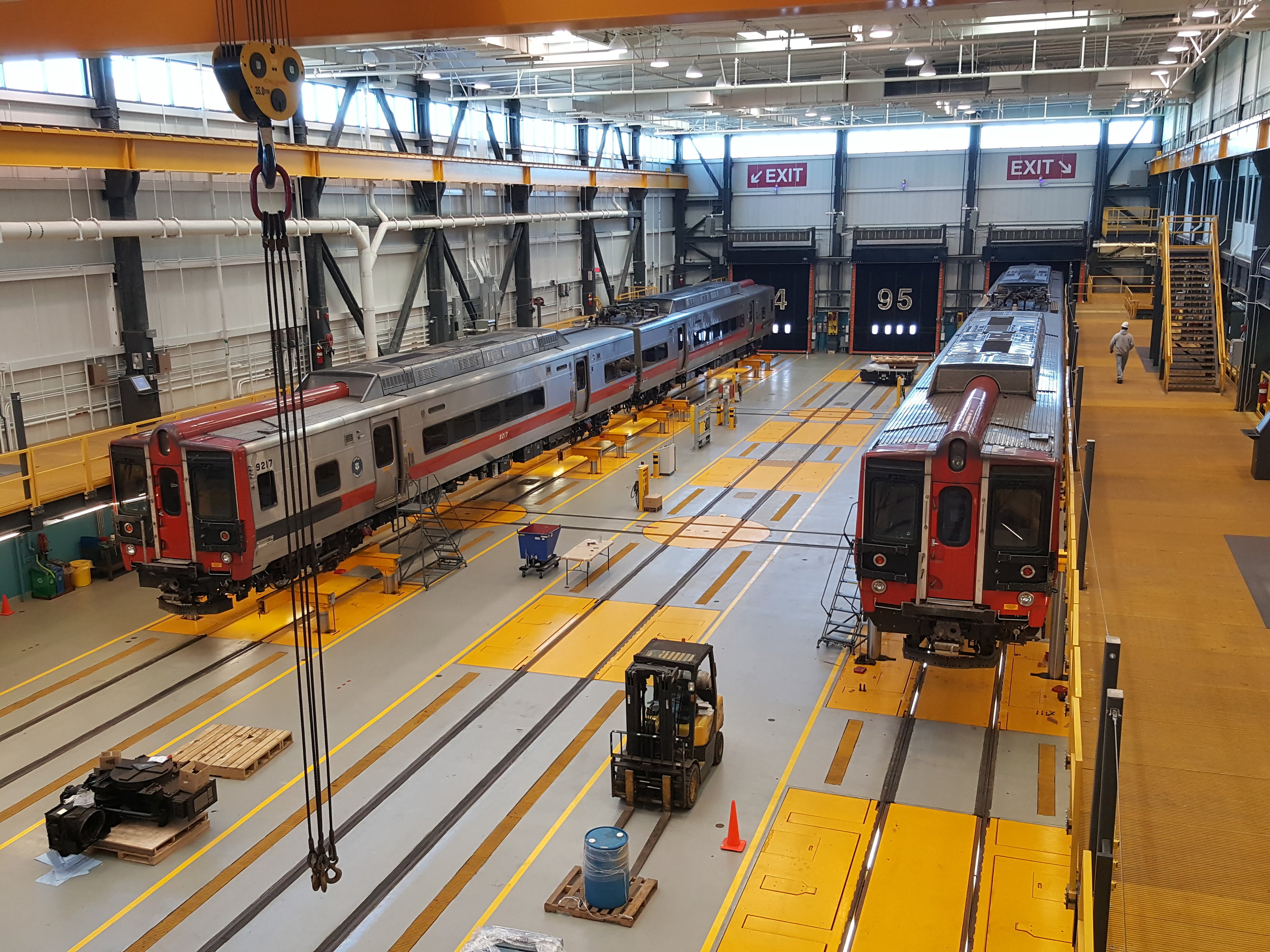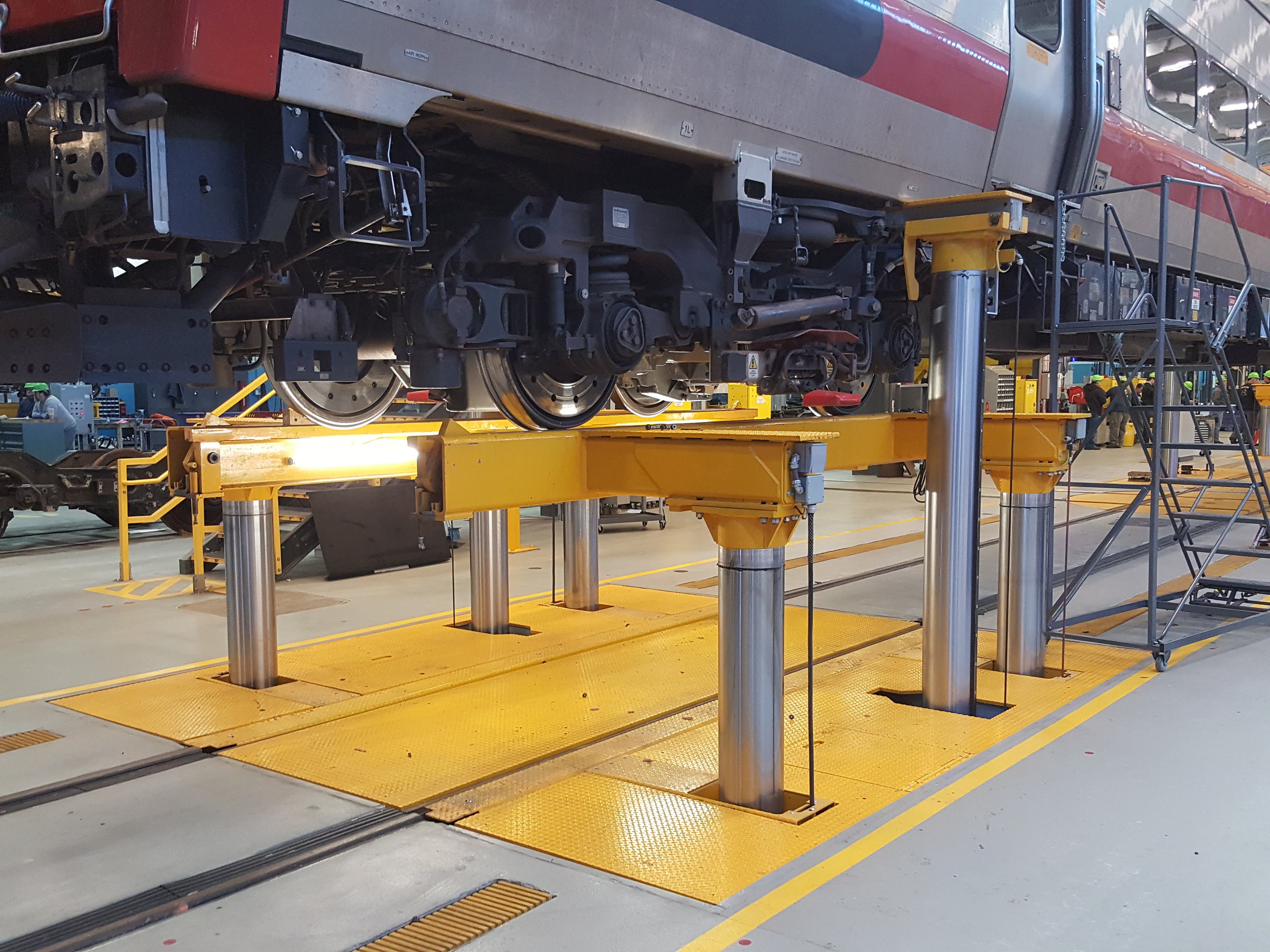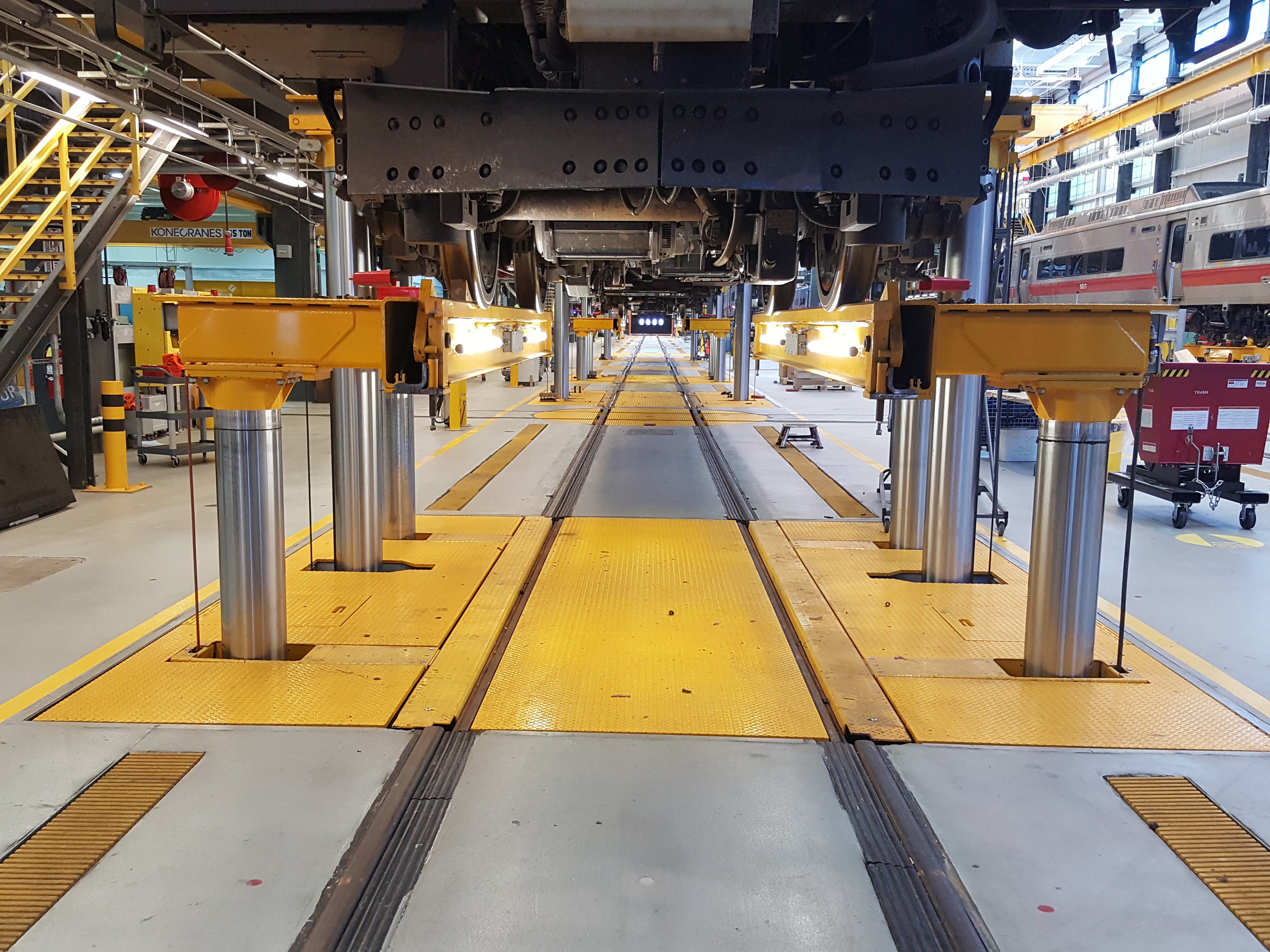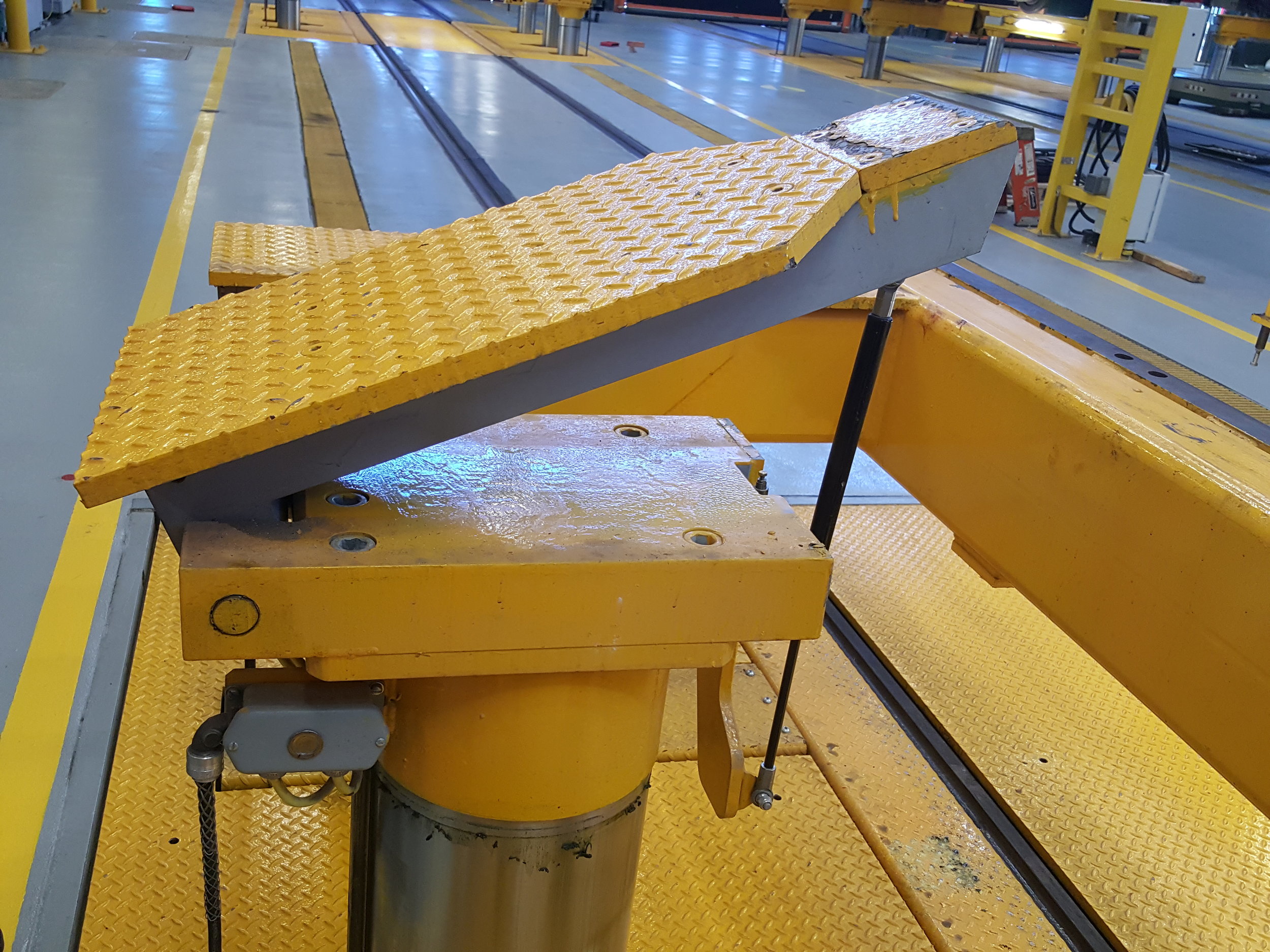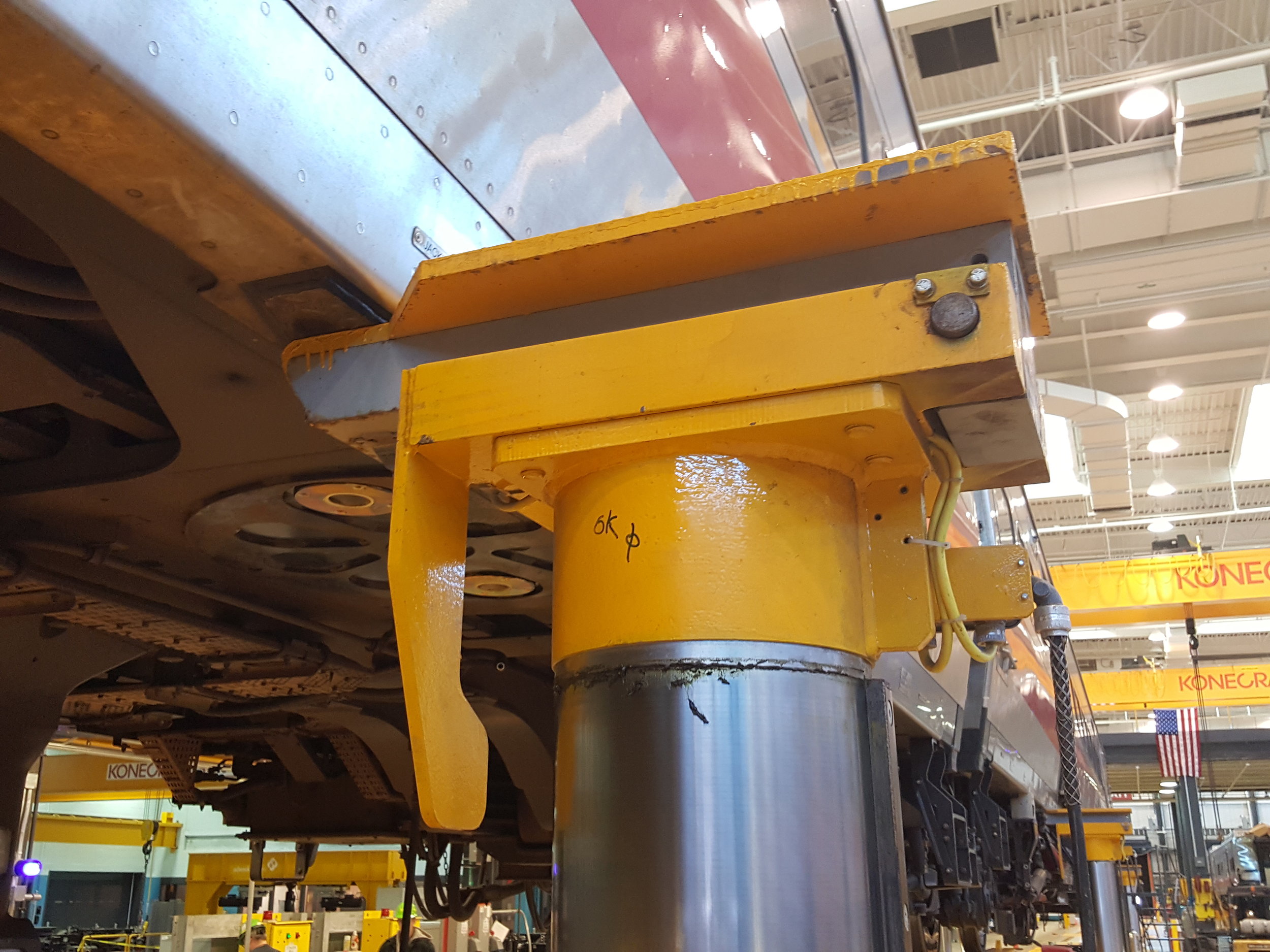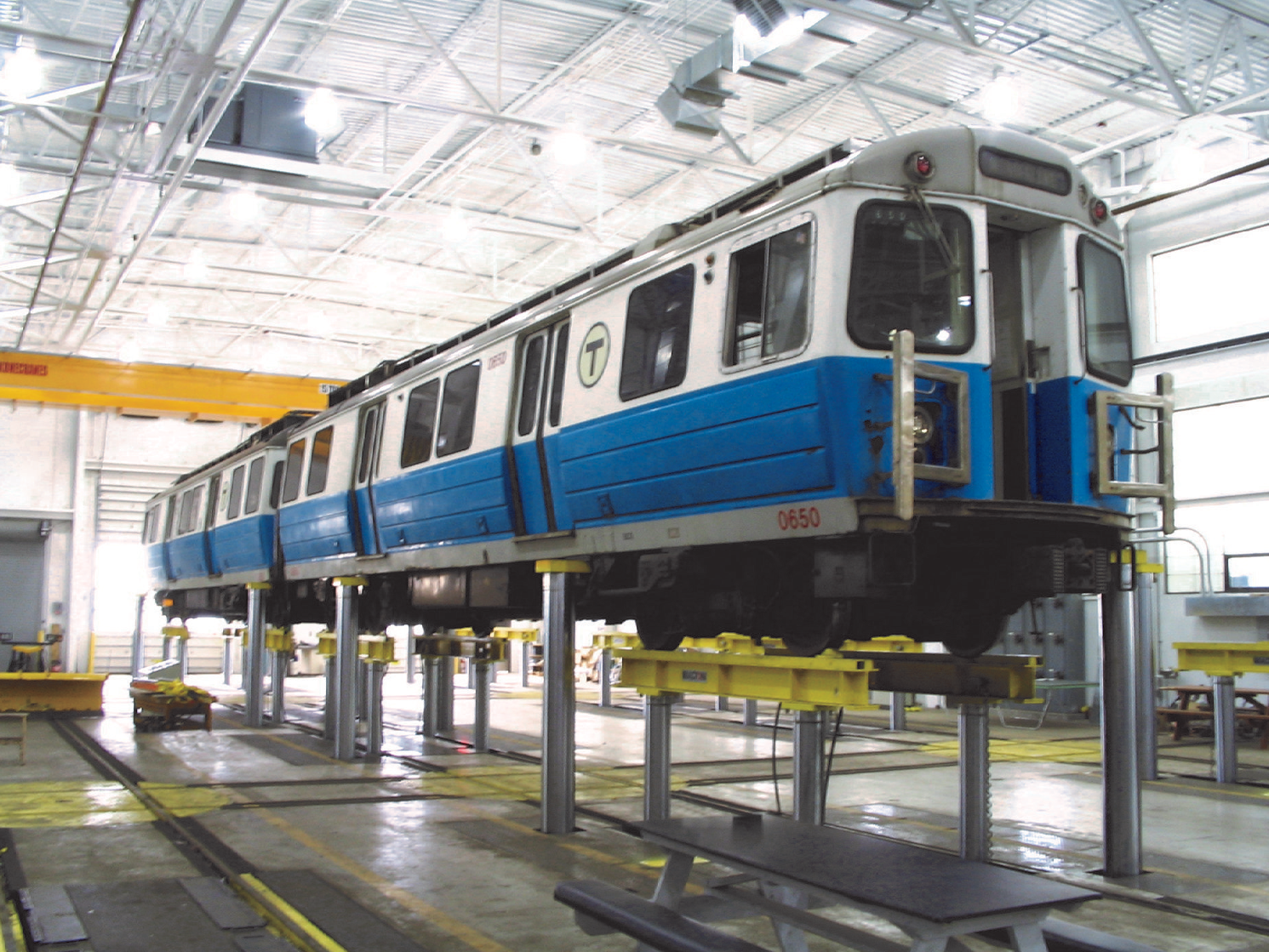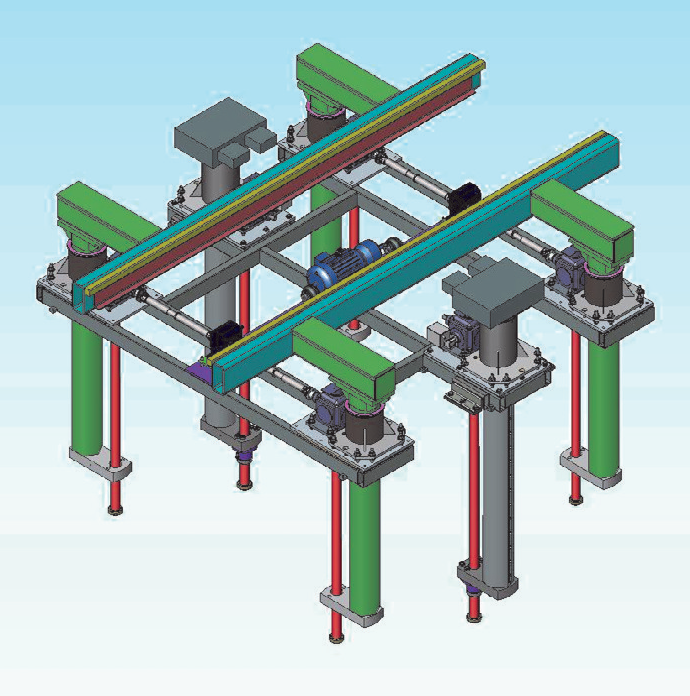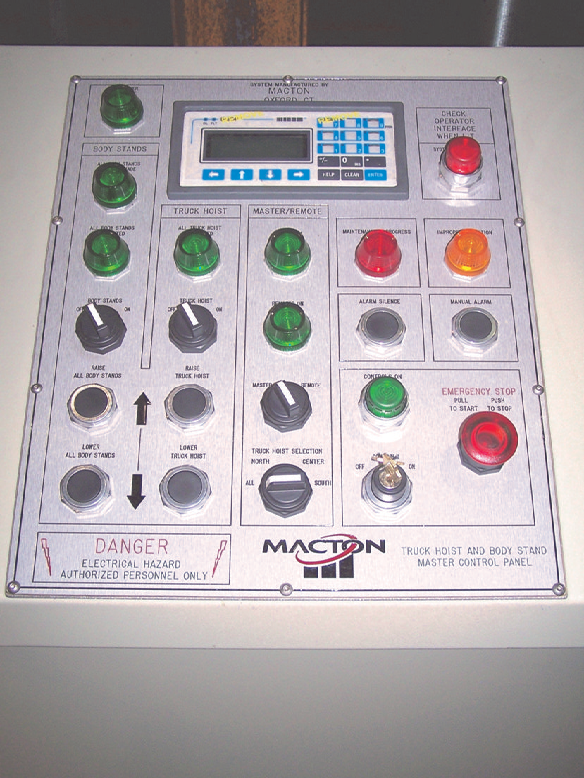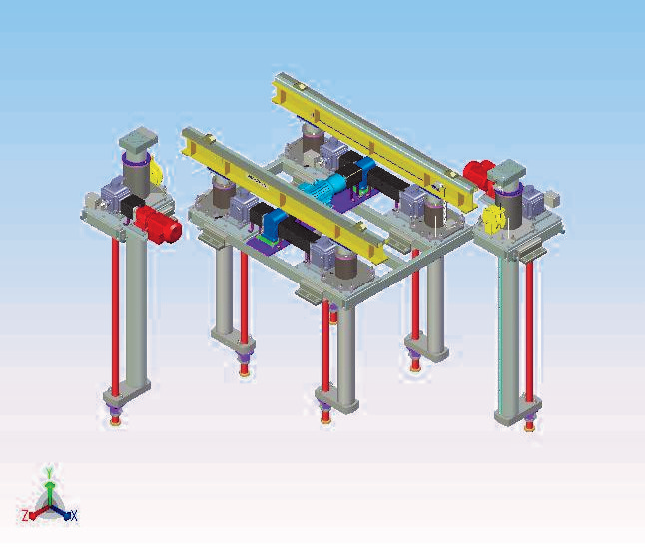CAR HOIST AND HOIST SYSEMS
Macton custom-engineered hoist systems provided by BBM Railway Equipment, LLC. let you choose from a wide selection of synchronized mechanical screw lift components, gear ratios, controls and power options – as a result, all hoist systems are tailored to job-specific configuration and capacity specifications. Our car hoists are designed for a variety of car types, from single units, married pairs and articulated cars, Macton hoist systems support a broad range of lift height, weight and vehicle dimensions. We even design lifts to accommodate multiple vehicle types on the same lift systems. Installations are customized to each specific set of fleet, customer and installation requirements. System pre-assembly and testing at our factory translates into significantly higher quality for all hoist systems installed at our customer’s facilities.
TYPES OF CAR HOIST SYSTEMS
Shallow Pit Car Hoists – The Macton design pioneered the development of shallow pit car hoist installations, with a pit depth of only 3'6". This approach offers considerable savings on excavation, construction and installation compared to conventional deep pit design. This is especially true with facilities located in high-water areas since deep pit systems may require much more extensive drainage systems versus the shallow pit system. In addition, ongoing maintenance is simpler and less costly with the shallow pit design; the screws are housed in a caisson that is filled with oil to provide continuous oil bath lubrication to the screw and nut. When the screw is protected from the environment by the caisson and continuously lubricated as it is with the shallow pit system, the wear life of the nut and screw may be more than doubled when compared to the deep pit design in which the screws are exposed to the harsh shop environment and not oil-bath-lubricated. The shallow-pit design is also less susceptible to damage from workers’ tools or shop debris falling into a deep pit with exposed screws. In addition, it eliminates the need to perform maintenance in what OSHA defines as a “confined space”. Due to these various advantages, the vast majority of new systems being built by transit authorities are designed with a shallow-pit design. The "shallow pit" concept is available in conventional or C-frame configurations.
Deep Pit Car Hoists – The original design for car hoist systems, the traditional deep pit or basement style installations allow unlimited access to all of the lift system components at any time. The main advantage of this deep pit design is that it is useful if storage space is needed in the basement area; the main disadvantage of this design is that it requires a substantially greater pit depth, typically in the range of 16 to 20 feet versus 3.5 feet for the shallow pit design.
C-Frame Car Hoists – The Macton design pioneered the original design for the development of the C-Frame concept. These special mechanical supports are available in a wide-clearance system that allows dismounted truck assemblies to be moved underneath elevated railcars to save space and reduce the number of truck turntables required. The system is complete with a second set of rails - one set to continuously support raised vehicles and the other at the shop floor level to support lowered trucks. One potential advantage of the C-Frame design is that it doesn't’t require the use of a truck turntable within the vehicle dimensions in order to remove the truck – this can allow a particular maintenance facility to have a narrower shop configuration.
BENEFITS
Reduction in Construction Costs for Shallow-Pit Design – While Macton designs also include deep-pit systems, the shallow-pit design lowers the up front construction cost for these systems versus a deep-pit design, since the overall area needed for excavation and construction is significantly reduced. In addition, construction costs are reduced for facilities located in high-water areas (since deep pit systems may require much more extensive drainage systems versus the shallow pit system).
Increased Safety of Shallow-Pit Design – The shallow-pit design has the further advantage of being safer, since there is no threat of workers, tools or shop debris falling into a deep pit with exposed screws – in addition, it eliminates the need to perform maintenance in what OSHA defines as a “confined space” – further, transit maintenance personnel prefer this design over the more constricting deep pit design, which can get dark and cramped.
Additional Built-In Safety Features – There are a number of added safety features to each of these systems, including the fact that the screw actuators on these systems are mechanically self-locking – this means that they can only be lifted or lowered under power, so you don’t have to worry about any accidental lowering. In addition, the actuators in these Macton lifts have built-in wear sensors that will automatically shut down the system when it goes outside of normal tolerances. Also, there is a steel safety nut positioned underneath the bronze load nut on each mechanical screw to provide added redundancy in these systems. Further, these systems also are generally designed and manufactured to have a safety factor of at least 5:1 (in terms of the ratio of load capacity to material strength), versus the 3:1 margin that is typically seen with many competing systems.
Long-Term Reliability – All of these systems are pre-assembled and tested in our manufacturing facility to ensure that all performance criteria have been met before they are shipped out to our customers. In addition, there is a special focus in the design, engineering and fabrication of these systems to ensure that they continue to run smoothly and reliably day in and day out for the years and decades to come – this has been proven out in the dozens of Macton hoist systems which have been in service for decades and continue to move smoothly and quietly.
Minimal Maintenance Required – These systems require only a minimal amount of routine maintenance each year, which can be scheduled for times when the facility is not normally in operation – in the shallow pit design, the screw is housed in a caisson that is filled with oil for continuous lubrication, which significantly increases the life of the lifting screw and nut versus the deep pit design (in which the screw and nut are not similarly protected).
Full Support Throughout Project – We provide full support throughout the entire project, beginning with the initial design of the system to be built, during which time our engineering staff interfaces with the project’s engineers and other professionals to provide the practical assistance and the detailed technical support needed to integrate its equipment into the overall installation. This support includes providing foundational, electrical and control requirements, trim details, data for structural analysis as well as any other assistance the project requires.
Ease of Equipment Installation – We provide a specially-trained field engineer or technician to supervise the installation, start-up and commissioning of its equipment, ensuring that it is brought on-line quickly and delivers the expected performance.
Ongoing Post-Sale Support – We also provide long-term spare parts and technical support services. Long-term service contracts are also available at each of these installations for periodic inspection and maintenance programs, as well as training services, as needed. In addition, we provide customers with the ability to easily upgrade their control panels, drives and other systems to ensure they reflect the latest in technology. BBM can also provide an interactive CD/DVD that may be used to train present and future shop personnel in the use and maintenance of this equipment.
Standard 2 Year Warranty – The equipment is warranted to be free from defects in material or workmanship for a period of two (2) years from the date it shipped from our facility. Accordingly, during such 2-year period, we will repair or replace any such defective parts or equipment at our cost. If required to trouble-shoot such equipment, we will provide the services of an onsite field service engineer, and if any such defects are found to exist, we will pay the labor and travel costs of such field service engineer. This warranty is void if the equipment is installed without supervision by a company representative. This warranty does not cover: (i) water damage, or damage due to chemical corrosion or from dirt or debris on or around the equipment, (ii) any damage caused by improper use or accident, or from the failure to perform the recommended periodic maintenance on the equipment, (iii) normal wear and tear, (iv) portions of the equipment repaired or modified by others without BBM’s prior written approval, or (v) any additional onsite labor, tools or equipment required for the inspection, removal and reinstallation of any parts of the equipment.
FEATURES
Drive System – The hoist drive system consists of four jacking units with self-locking acme machine screws and an aluminum bronze load nut and a steel safety nut. One central motor drives the four jacking units through a series of beveled gear boxes and drive shafts. If the shallow pit foundation is used, the screws are housed in an enclosed caisson and lubricated by means of a continuous oil bath providing optimal wear life for the load nut.
Operator Controls – Operator controls can be either fixed column mounted or with a pedestal type panel with optional remote. The control station enclosure is Nema 12 rated with heavy duty oil tight push buttons, selector switches and pilot lights. An LCD display on the operator control panel provides operating and fault condition messages to facilitate hoist operation and troubleshooting.
Safety Features – In addition to the self-locking acme machine screws and steel safety nuts, standard safety features include: visual and audible indication of hoist operation, a motion control system that will shut down the hoist system if one of the screw jacks stops moving, nut wear sensors, nut separation switches, emergency stop buttons and body stand load detection switches.
Body Support Systems – The self-locking, repeatable accuracy of a mechanical screw jack and a guide system provide a rigid structure with the capacity to withstand off-center axial loads. This unique, innovative arrangement easily handles load eccentricities and protects the lifting screw.
Body Hoist Systems – An alternative solution to body support systems is to use a body hoist system, which allows the vehicle body to change elevations without having a truck attached. These systems can also be used to elevate the car body off of the truck without the use of a car hoist system.
Wheel Spinning Systems – These systems can be used as an alternative to a jacking carriage. Macton designs offer a fixed-position wheel system which elevates the truck off of the car hoist for inspection and allows for power testing of truck electrical systems and gearing. Macton designs offer 2 different styles of spinning systems: a manual engagement system which features a flip-up pivoting assembly, and an automatic spinning system which can be integrated into the hoist mechanism itself, requiring no manual actuation.
